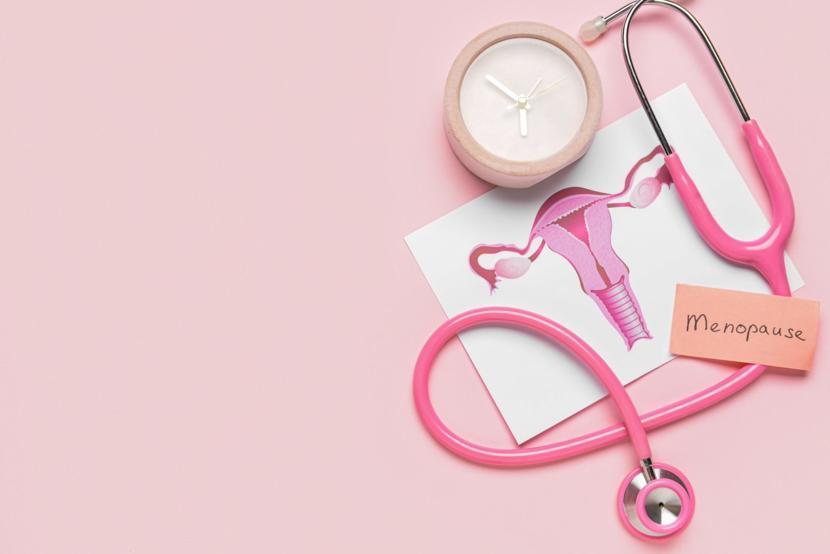Menopause, Libido, and Hormone Replacement

Dr. Kuhlmann is both a urologist and urogynecologist who specializes in women's pelvic health and sexual medicine. Hailing originally from the Midwest, she then came to Los Angeles to complete her residency in urology at Cedars-Sinai Medical Center. She went on to complete a fellowship in Urogynecology and Reconstructive... more
- How does menopause impact women?
Menopause wreaks havoc on women’s bodies. You go from having years and years of predictable cycling of hormone levels, to suddenly having a roller coaster of hormone surges and drops during perimenopause, to then having a completely empty gas tank during menopause. There are estrogen, progesterone, and testosterone receptors all over your body, so it makes sense that the drop in these hormone levels experienced during menopause has wide-spread effects. Symptoms of menopause certainly include hot flashes and night sweats, but that is just the tip of the iceberg. Joint and muscle pain and stiffness, loss of bone density/fractures, weight gain, poor sleep, fatigue, urinary incontinence, overactive bladder, urinary tract infections, vaginal dryness and irritation, constipation/bloating, heart palpitations, skin/hair/nail changes, headaches, changes in mood, and cognitive decline/memory issues/brain fog are all potential symptoms of menopause! And then there is the impact on our sexuality – menopause can lead to low libido, muted orgasm, decreased arousal, and painful sex. All of these massive changes are occurring simultaneously, causing women to just not feel like themselves! When teenagers are going through puberty, we chalk up their behavior to hormones and give them leeway and understanding, but when the exact same thing is happening to women during perimenopause and menopause, we expect them to suffer in silence!
- How does menopause impact libido?
More than half of women experience some kind of negative impact on sexual function during menopause (probably closer to 70-80%). This can be in the form of low libido, inability to become physically aroused (lubrication), difficulty achieving orgasm, or having pain during sexual activity due to estrogen/testosterone deficiency in the genital tissues. This can be devastating to a woman’s sense of self, and also to her relationship with her partner. So many women come in and one of the first things they say is how distressing it is to not be able to have sex, not just for themselves, but because they’re worried about their partners’ happiness as well. There are already associations between depressed mood and menopause, and the loss of sexuality and ability to have intimacy in relationships just compounds these negative changes in mood.
- What is hormone replacement therapy?
It is important to distinguish between the two types of hormone replacement therapy. One is local hormone replacement therapy, and one is systemic hormone replacement therapy. While the same types of hormones are used for both of these therapies, the dosing, indications, and potential side effects are very different.
The first of these, local hormone replacement therapy, is the use of a topical hormone, most commonly estrogen, in the vagina. This helps with all the symptoms of Genitourinary Syndrome of Menopause (vaginal dryness and irritation, urinary tract infections, overactive bladder, urinary incontinence), which is caused by a deficiency of estrogen specifically in the genitourinary tissues (vagina, vulva, bladder, urethra). This treatment is extremely safe to use, as it does not cause your blood levels of estrogen to rise over the normal range of menopause. Because it is not absorbed systemically, it does NOT improve libido, but it DOES improve physical arousal, orgasm, and pain with sex. There are many different forms of this type of treatment, including creams, vaginal suppositories, and vaginal rings. Depending on the form of treatment, it may be applied 2-3 times per week, nightly, or once every 3 months, and is continued ‘til death do you part. All of these products require a prescription. You should see your healthcare provider to determine which form is the best for you.
The other type of hormone replacement therapy, systemic hormone replacement, does cause your blood levels of hormones to rise. Libido is improved by hormone impact on the brain, which requires an increase in blood levels of hormones. Increasing your blood hormone levels can also help with all of the other symptoms of menopause! An increase in systemic hormones will allow these molecules to bind to their receptors in many areas of the body. Bone health, muscle and joint health, skin/hair/nail health, mental health, etc! There is quite a bit of nuance to hormone replacement therapy, and it must be individualized to each person, so it’s important to consult with a doctor who specializes in menopause/hormone management about which hormones you need replaced and what way to go about doing that.
As a general overview, there are three main hormones that can be replaced. Estrogen is the one we hear the most about. It comes in many forms, including a patch on your abdomen or thigh that is replaced twice weekly, gel that is applied daily to your arm or leg, a spray that is applied daily to your arm, or a ring inserted into the vagina every 3 months. Other methods of administration are oral and pellet-based. All of these have various pros and cons that should be discussed with your doctor. They also can vary significantly in cost. This is the hormone responsible for treating most of the symptoms of menopause. Instead of targeting specific blood levels of estrogen, the dosing and form used is titrated to treat your symptoms.
The second hormone is progesterone. This one is important if you still have your uterus. It prevents estrogen-dependent overgrowth of the uterine lining, whjch can turn into endometrial cancer. It also helps with sleep and hair health. You can take progesterone orally or as a vaginal suppository on a daily basis. Another option is to get a progesterone intrauterine device (IUD), which is especially helpful if you’re having heavy vaginal bleeding during perimenopause.
The last hormone is testosterone. This has traditionally been seen as the “male” hormone, but women actually have more testosterone than estrogen in their bodies! Testosterone can be very helpful for low libido. It is usually added in if you still have low sexual desire after you’re stable on estrogen replacement, but it can be used by itself. It comes in several forms, but most often it is prescribed as a cream that is applied to your leg daily. It can also be administered via injection or pellets under the skin.
All of these hormones come in different strengths, which can be adjusted based on your symptoms. All of these hormones require a prescription.
In regard to when to stop hormones, that has to be a conversation you have with your doctor. You can start to wean systemic hormone replacement as you get older, but if symptoms return, you may need to restart them. There is no specific start and end date for hormone replacement.
- Does hormone replacement therapy impact libido?
Vaginal estrogen for local hormone replacement to treat Genitourinary Syndrome of Menopause does not increase libido. Transdermal estrogen for systemic hormone replacement does increase libido, as does progesterone and testosterone at systemic hormone replacement doses.
- How does this work?
When hormone replacement therapy, with some combination of estrogen, progesterone, and testosterone, causes systemic levels of hormones to increase, this allows for these hormones to bind receptors in the brain, which modulate desire in a positive, or “excitatory”, way through various neural pathways.
- Does oral estrogen help with libido?
High doses of synthetic oral hormones, like what is found in birth control pills, increases your blood levels of a molecule called Sex Hormone Binding Globulin (SHBG). This molecule binds testosterone, which is a very important contributor to sexual desire/libido. When SHBG binds your body’s testosterone, it makes it inactive, which is why oral hormones not only don’t improve your libido, but they may actually cause it to decrease.
- What should women expect when starting hormone replacement therapy?
With hormone replacement therapy, there is no playbook on exactly what changes you’ll experience and when.
Typically, local hormone treatment with vaginal estrogen takes about 6 weeks to see an appreciable benefit, with maximal effect after 2-3 months of use. Initially, you may start to have less skin irritation and improved lubrication, with impact on voiding function and urinary tract infections taking a bit longer.
For systemic hormone replacement with estrogen +/- progesterone, you can expect to notice some improvement in menopause symptoms in about 2 weeks. If you haven’t noticed any effect by 6-8 weeks, then you may need to check blood hormone levels to make sure the method you’re using is getting absorbed properly.
For testosterone replacement therapy, this takes 4-6 months to really notice an improvement. But if you stick with it, it truly has the power to give you back your sex drive.
- Anything else readers should know about this topic?
There are so many options for increasing libido after menopause. In addition to hormone therapy, there are several other agents that act on the central nervous system to help improve libido. So if you can’t take hormone therapy, don’t give up hope, there are still ways to improve your libido. Unfortunately, there isn’t enough emphasis on menopause management in our current medical curriculums, so you really have to advocate for yourself. Don’t hesitate to ask your doctor about these things! And if they don’t specialize in menopause management, then ask for a referral to someone who does! Don’t take no for an answer. Your sex life does not have to end after menopause.









